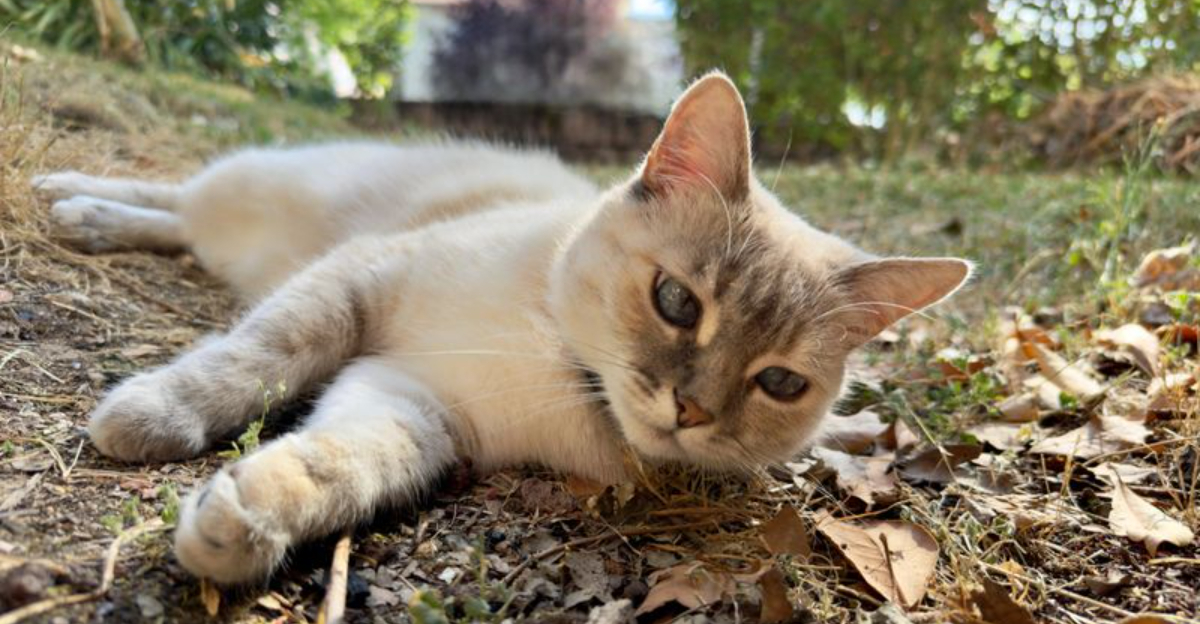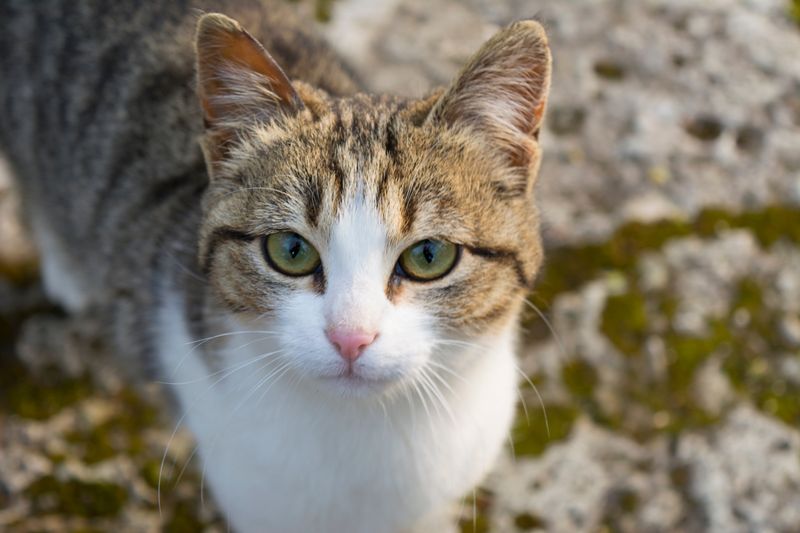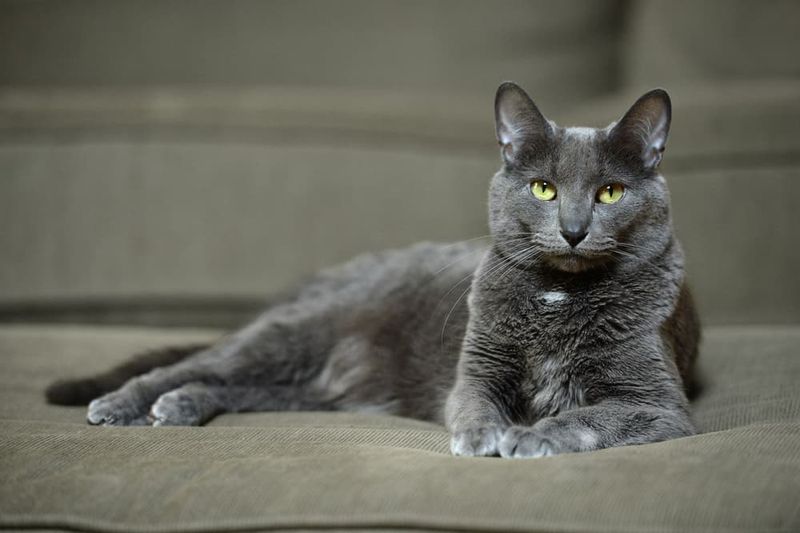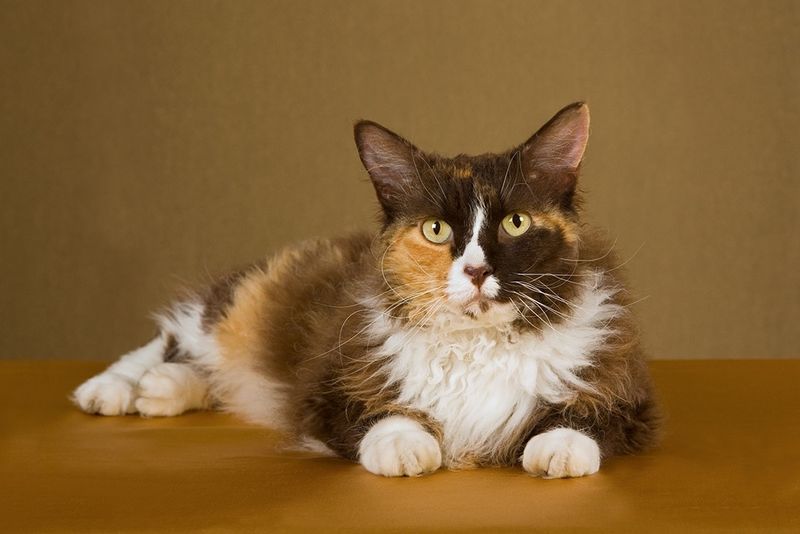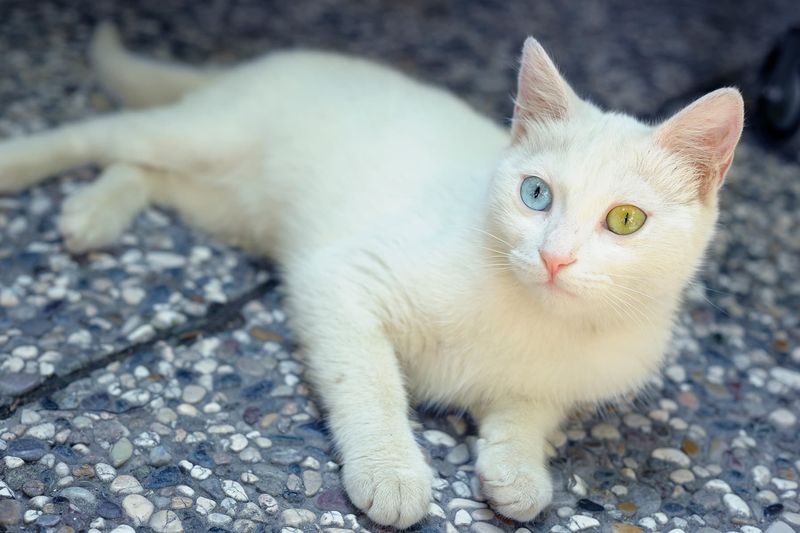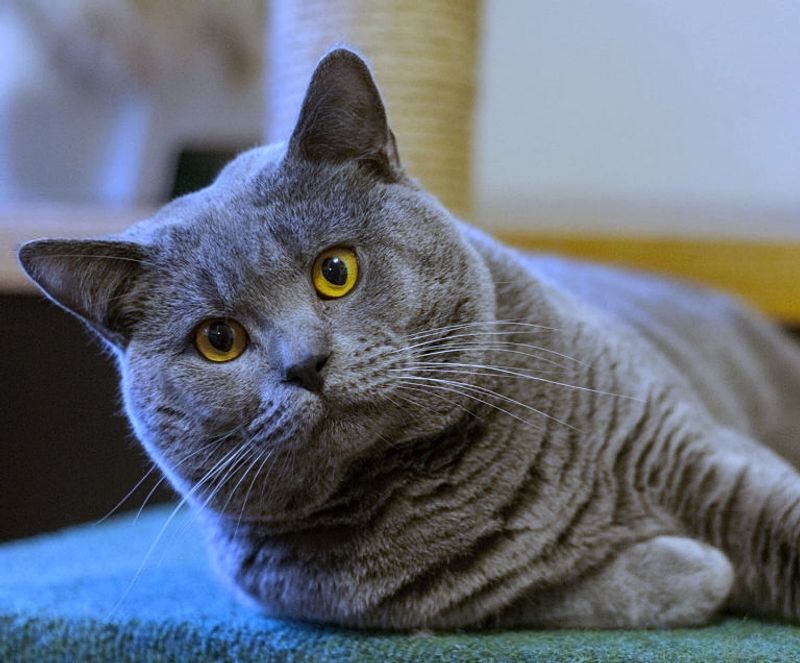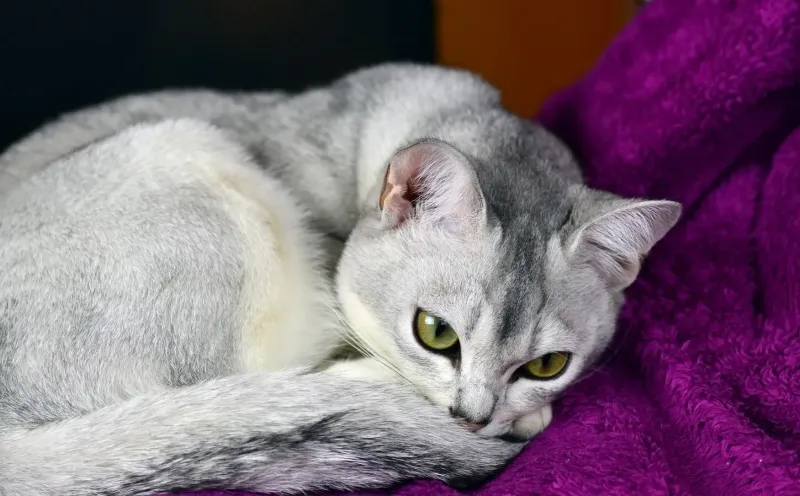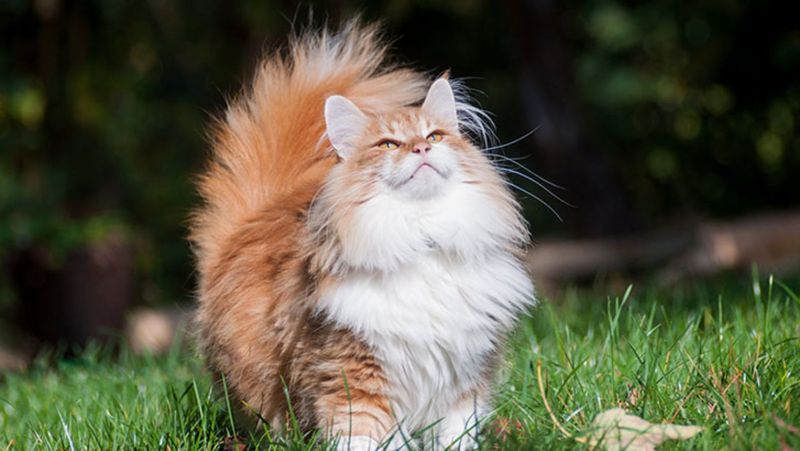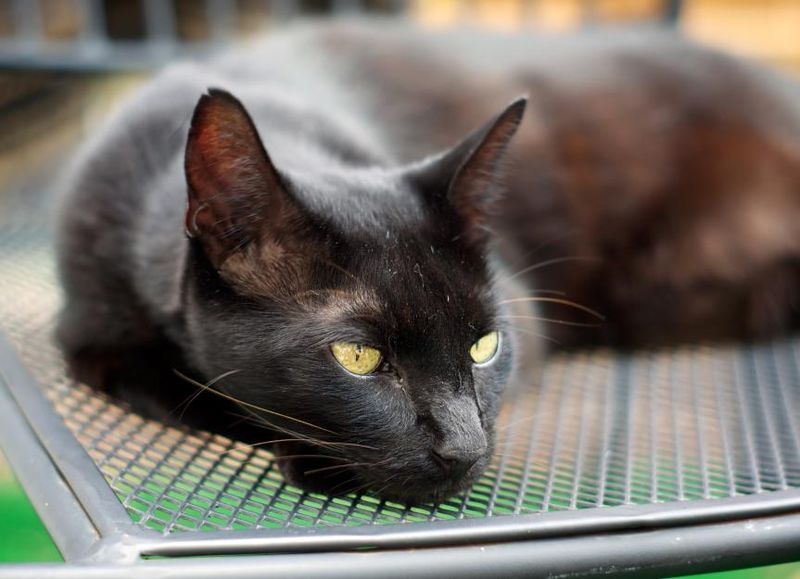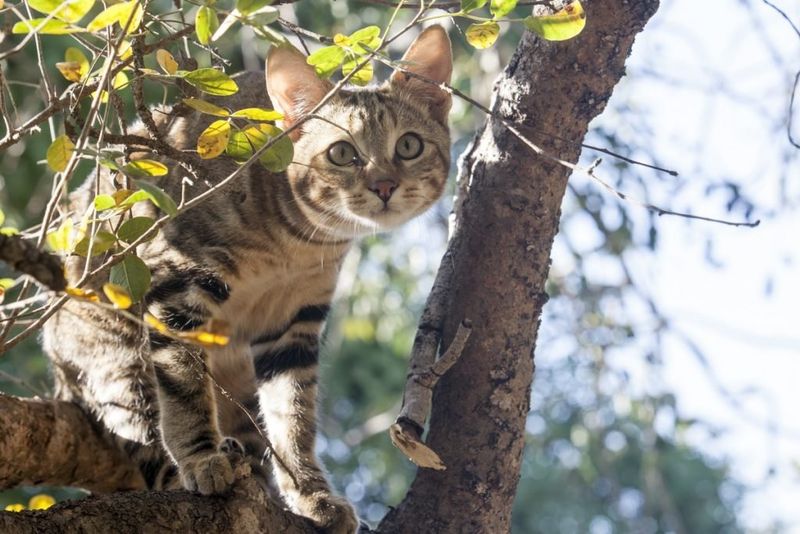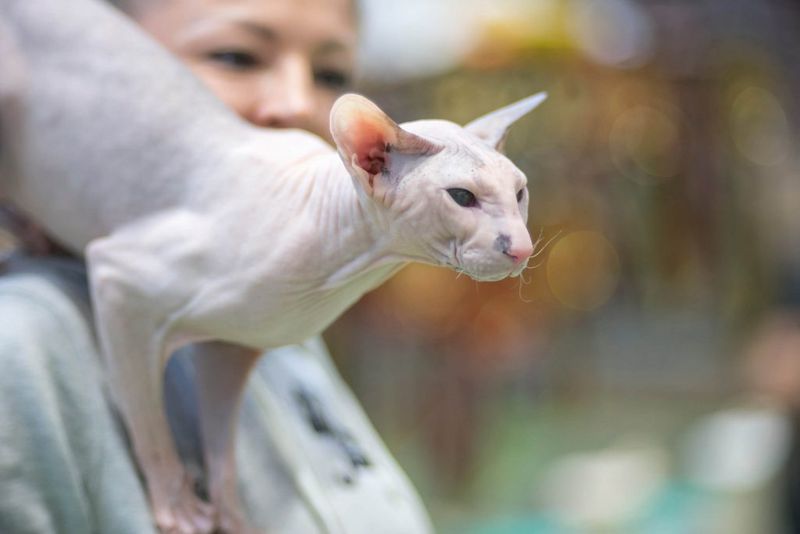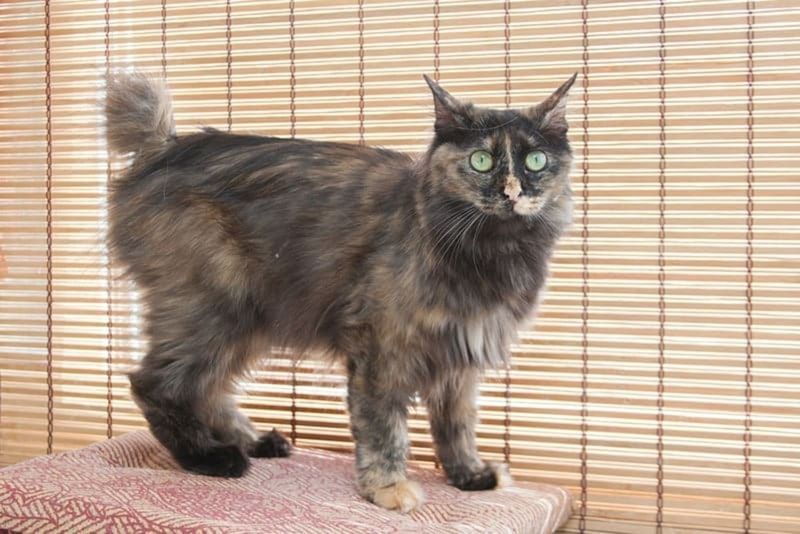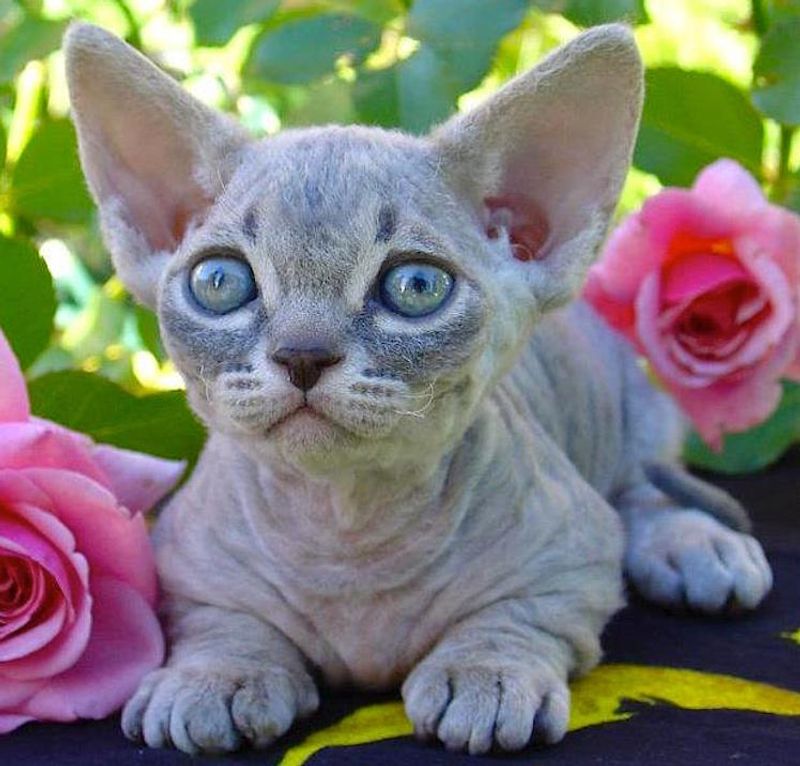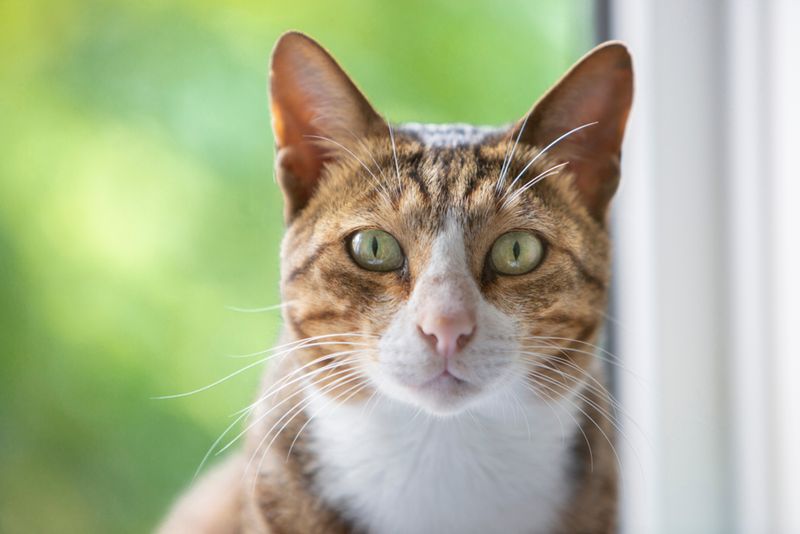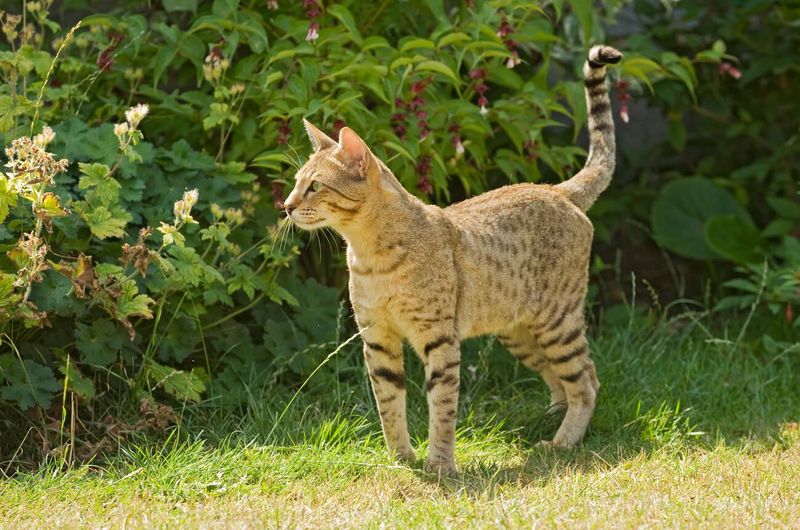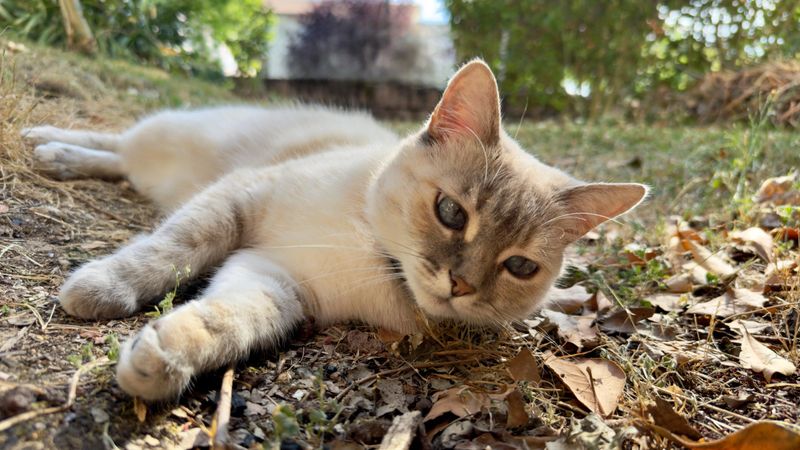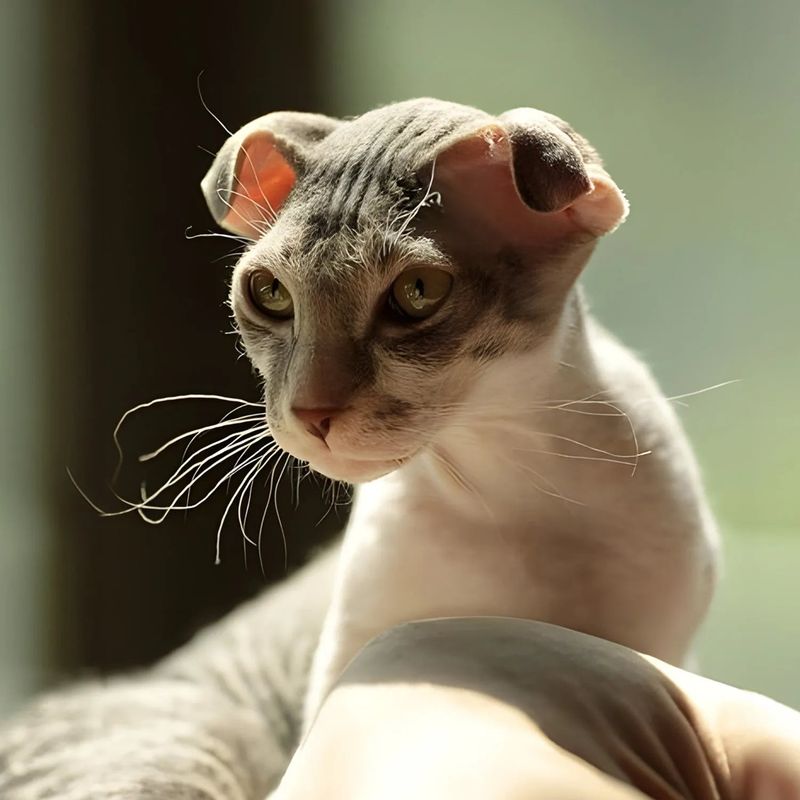📖 Table of Content:
Cat lovers might know their Siamese from their Persians, but the feline world has many hidden gems. Beyond the common household cats are rare breeds with fascinating histories and unique traits. These lesser-known felines might not grace magazine covers often, but they deserve just as much attention for their special qualities and charms.
1. American Wirehair
Born from a spontaneous mutation in upstate New York in 1966, the American Wirehair stands out with its uniquely textured coat that feels like steel wool. Each hair is crimped, hooked, or bent, creating a springy, dense feel unlike any other cat breed.
Despite their unusual appearance, these cats are surprisingly low-maintenance. Their coat requires minimal grooming and sheds less than many other breeds. American Wirehairs have a playful, affectionate personality and adapt well to various living situations.
The breed remains rare with only a few hundred registered annually, making them a special find for cat enthusiasts who appreciate distinctive features with easygoing temperaments.
2. Korat
Silver-blue coats with luminous green eyes make Korats instantly recognizable. Originally from Thailand, these cats were considered symbols of good fortune and were often given as gifts to newlyweds. Their name comes from the Korat province, where they were first discovered.
Korats form strong bonds with their families and show remarkable intelligence. They can learn tricks, open doors, and even respond to their names consistently. Unlike many cats, they remain playful well into their senior years.
What makes them rare? Strict breeding standards and their slow maturation process – Korats take up to five years to fully develop their distinctive features and coat color.
3. LaPerm
LaPerms catch your eye with their curly, wavy coats that resulted from a spontaneous genetic mutation on an Oregon farm in 1982. The first LaPerm was born completely bald but developed a soft, curly coat as she matured – surprising her owners!
These cats combine playful energy with a gentle disposition. They love climbing to high perches and observing their surroundings but are equally content cuddling in your lap. LaPerms are known for using their paws like hands to examine objects that interest them.
Their rarity stems from their recent development and limited breeding programs, with only a few hundred registered worldwide each year.
4. Turkish Van
Known as “swimming cats,” Turkish Vans love water—a rare trait among felines. Their thick, water-resistant fur and strong build make them excellent swimmers. This breed hails from Turkey’s Lake Van region, where they’ve thrived for millennia.
Their most striking feature is their unique coloration – mostly white with colored markings only on the head and tail, creating what’s called the “van pattern.” Turkish Vans are energetic, athletic, and incredibly intelligent. They excel at learning tricks and solving puzzles.
Despite their ancient heritage, Turkish Vans remain rare outside their native country, with fewer than 100 registered in North America annually.
5. Chartreux
French monasteries once housed these blue-gray cats with copper eyes. Legend claims Chartreux cats lived alongside Carthusian monks since the 13th century, though modern historians debate this connection. Their plush double coats feel like sheep’s wool and are developed to protect against harsh European winters.
Chartreux cats communicate primarily through chirps and trills rather than typical meows. They’re known for their hunting prowess and were historically kept as mousers in monasteries, shops, and homes throughout France.
While moderately popular in Europe, Chartreux cats nearly disappeared during World War II. Dedicated breeders saved them from extinction, but they remain uncommon in North America.
6. Burmilla
In 1981, a serendipitous encounter between a Chinchilla Persian and a Burmese cat in the UK—thanks to an open door left by a cleaner—led to the unexpected birth of the Burmilla breed.
Their silver coats with varying degrees of shading give Burmillas an ethereal appearance. The fur feels silky to the touch and requires minimal grooming. These medium-sized cats combine the laid-back nature of Persians with the playfulness of Burmese.
Burmillas remain rare because they’re relatively new and breeding programs are limited. Many cat fanciers haven’t even heard of them, despite their stunning appearance and wonderful temperament.
7. Norwegian Forest Cat
Vikings sailed with these magnificent cats as ship’s mousers over a thousand years ago. Norwegian Forest Cats evolved naturally in the harsh Scandinavian climate, developing water-resistant double coats, tufted ears, and large paws designed for walking on snow.
Their muscular bodies and climbing abilities are unmatched – they can scale vertical surfaces using their strong claws. Despite their wild appearance, “Wegies” have sweet, gentle personalities. They form strong bonds with their families but respect personal space.
While popular in Northern Europe, these cats remain relatively uncommon in other parts of the world. Their slow maturation process (taking up to five years to reach full size) also contributes to their rarity.
8. Havana Brown
Chocolate-colored from nose to tail, Havana Browns showcase a rich mahogany coat unlike any other breed. Created in 1950s England by crossing Siamese with black domestic shorthairs, they were named for their resemblance to Havana cigars rather than any connection to Cuba.
Havana Browns use their whiskers and paws to explore everything around them. They’ll gently tap your face to wake you up and use their paws to examine new objects. Their bright green eyes contrast beautifully with their warm-toned coats.
Fewer than 1,000 Havana Browns exist worldwide, making them one of the rarest pedigreed cats. Breeding challenges and limited genetic diversity contribute to their scarcity.
9. Sokoke
Sokokes emerged from Kenya’s Arabuko-Sokoke forest, where local communities treasured them for their exceptional hunting skills. Only officially recognized as a breed in the 1990s, these cats have a distinctive marble-patterned tabby coat that provides perfect camouflage in their native forest environment.
Their athletic bodies and long legs make them incredible jumpers. Sokokes can leap up to six times their body length! They form close bonds with their chosen humans but remain somewhat wary of strangers, reflecting their semi-wild heritage.
Extremely rare outside East Africa, fewer than 100 registered Sokokes exist in North America and Europe combined. Conservation efforts focus on preserving their unique genetic makeup.
10. Peterbald
Created in Russia in 1994, Peterbalds are the result of breeding Oriental Shorthairs with a rare hairless cat. They differ from Sphynx cats by having a variety of coat types, from fully hairless to a delicate, velvety peach-fuzz feel.
Their elegantly elongated bodies, almond-shaped eyes, and large ears give them a distinctly aristocratic appearance. Peterbalds are extremely social cats who suffer from separation anxiety if left alone too long. They follow their owners everywhere and vocalize frequently.
Limited breeding programs and export restrictions from Russia have kept Peterbald numbers low globally, with fewer than 200 registered annually outside Eastern Europe.
11. Kurilian Bobtail
Native to Russia’s remote Kuril Islands, these cats evolved their distinctive bobbed tails naturally over hundreds of years. Each Kurilian Bobtail has a unique pom-pom tail consisting of 2-10 kinked vertebrae, with no two tails exactly alike.
Perfectly adapted to harsh environments, they have water-resistant triple coats and powerful hind legs for pouncing on prey. Kurilian Bobtails are renowned for their fishing abilities – they’ll actually wade into streams to catch fish with their paws!
Their isolation on the Kuril archipelago kept them virtually unknown until the late 20th century. Even today, finding a Kurilian Bobtail outside Russia requires patience and dedication, as fewer than 100 exist in North America.
12. Minskin
Bred in Boston in 1998, Minskins are a hybrid of Munchkin, Sphynx, Devon Rex, and Burmese cats. They feature the short legs of a Munchkin and partial hairlessness from the Sphynx, with furry “socks” on their feet and faces.
Despite their short stature, Minskins are surprisingly agile and can move quickly. Their bodies stay warm to the touch due to their minimal coat. These affectionate cats seek human companionship constantly and get along exceptionally well with children and other pets.
As one of the newest recognized breeds, Minskins remain exceedingly rare with fewer than 100 registered worldwide, and breeding programs exist in only a handful of countries.
13. Dragon Li
Dragon Li cats (also called Chinese Li Hua) have roamed China for centuries, appearing in ancient manuscripts dating back over 2,000 years. Their distinctive brown mackerel tabby pattern features a “broken” line running along their spine, resembling the Chinese character for “king” on their foreheads.
As natural hunters, Dragon Lis controlled rodent populations in rural Chinese villages for generations. Their muscular bodies and remarkable agility allow them to jump over six feet high from a standing position. They form strong bonds with their families but maintain an independent streak.
Rarely found outside China, the breed wasn’t officially recognized internationally until 2010. Strict export limitations keep them among the world’s least common pedigreed cats.
14. Arabian Mau
Originating in the deserts of the Arabian Peninsula, Arabian Maus have been treasured for centuries. Their slim, agile bodies and distinctive tufted ears are adaptations to desert life. While tabby patterns dominate, some solid-colored cats also appear.
These cats possess remarkable heat tolerance and need less water than most breeds. Arabian Maus are known for their vocalizations – they have a wide range of chirps, trills, and meows to communicate with their humans. Their intelligence makes them quick learners.
Only recently recognized by international cat associations, Arabian Maus remain virtually unknown outside Middle Eastern countries. Preservation efforts focus on maintaining their natural adaptations and distinctive desert heritage.
15. Serengeti
Developed in the 1990s by Karen Sausman, Serengetis are a cross between Bengals and Oriental Shorthairs, designed to look like African servals while being fully domestic. They stand out with their exceptionally long legs and big, rounded ears.
Their striking spotted coats come in several color variations, with gold/black being most common. Serengetis can jump up to 7 feet high from a standing position! Their boundless energy requires plenty of playtime and vertical space for climbing.
Still in development as a breed, Serengetis aren’t recognized by all cat associations. Their specialized breeding requirements and limited breeding programs keep their numbers extremely low, with fewer than 800 registered worldwide.
16. Ojos Azules
First discovered in New Mexico in 1984, Ojos Azules cats feature a natural genetic mutation that produces deep blue eyes regardless of coat color. Unlike Siamese, whose blue eyes result from temperature-sensitive albinism, Ojos Azules have true blue eyes that don’t require color-point patterns.
Their name literally means “blue eyes” in Spanish. The breed can display any coat color or pattern, though white markings on the face and tail tips are common. These medium-sized cats have gentle, affectionate personalities and form strong bonds with their families.
Extreme rarity defines this breed – fewer than 100 confirmed Ojos Azules exist today. Breeding difficulties arose when researchers discovered the gene causing blue eyes could produce skull defects when inherited from both parents.
17. Ukrainian Levkoy
Ukrainian Levkoys combine the folded ears of Scottish Folds with the hairlessness of Donskoys. Created in Ukraine in 2004, these distinctive cats have an appearance often described as “alien-like” with their angular heads, prominent cheekbones, and large, downward-folding ears.
Their skin feels warm and soft like suede leather. Despite their unusual appearance, Levkoys are extraordinarily friendly and sociable cats. They form deep attachments to their families and actively seek out human interaction and playtime.
Political instability in Ukraine has complicated breeding programs, making these cats extremely rare outside Eastern Europe. Only about 500 registered Ukrainian Levkoys exist worldwide, with fewer than 50 in North America.
